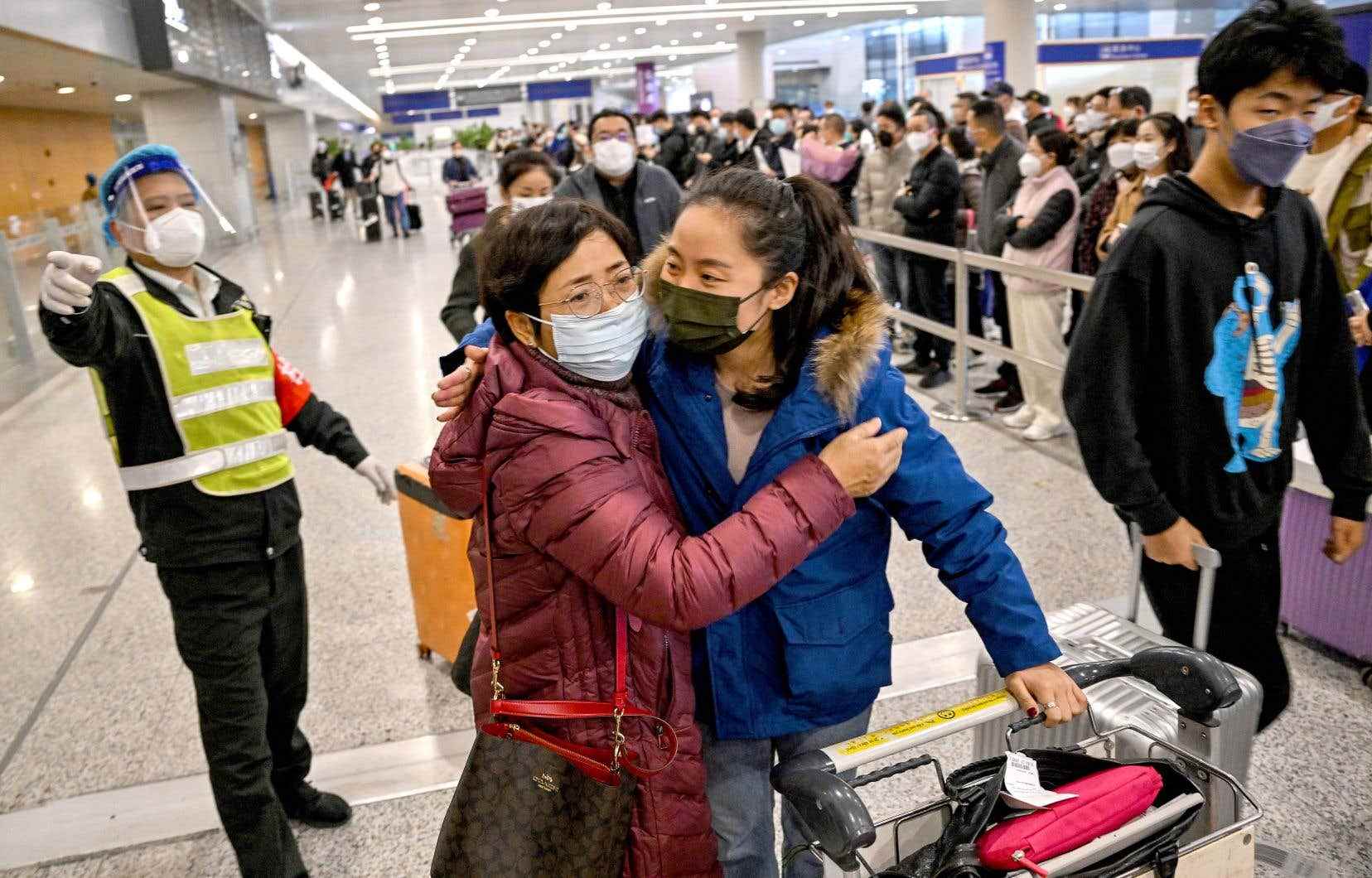“The pandemic is over. The President of the United States, Joe Biden, had decided the question last September, but scientists do not necessarily share this optimism. New treatments, hospital management and China are all uncertainties for the fourth pandemic year that is beginning.
“A pandemic lasts two to three years, sometimes a little more, sometimes a little less”, underlines the virologist Benoit Barbeau. Fortunately, SARS-CoV-2 has become “less pathogenic” over time, and the world will “continue to slide towards endemic”.
Nearly half of Quebecers contracted the disease in 2022, according to an INSPQ survey, which leaves only 5% of the population without any immunity.
The problem is that we can reach an endemic level, which we don’t prefer, like malaria in Africa, where it’s all the time. After a while you get so infected that the severe form isn’t going to hit you too hard, but there are people who are still going to be hit hard.
The virus could therefore end up blending in with the mass of seasonal flu and joining the viruses, bacteria and other microbes that circulate when people come into close contact.
2023, the end of the pandemic? “Scientifically, the answer is possibly,” according to infectious disease specialist and microbiologist Donald C. Vinh. “The problem is that you can get to an endemic level, which you don’t prefer, like malaria in Africa, where it’s all the time. After a while you get so infected that the severe form isn’t going to hit you too hard, but there are people who are still going to be hit hard. »
The miracle drug will probably never come
By intravenous or tablet, antivirals are treading water.
The Japanese have authorized a new drug, Xocova, which looks promising. The Dr Vinh has reservations, like any good scientist. “In my field, often you hear promising studies, but for several reasons, the promise is never realized. »
“2023 could be a turning point” for vaccines, adds Benoit Barbeau. The booster dose risks becoming a seasonal vaccine “like the flu vaccine for vulnerable people, but not for the whole population. And the further we go, the more we will have a vaccine adapted to what we expect and what we see circulating. »
The arrival at home of vaccines sprayed directly into our nostrils could also change the situation. This type of vaccine is only administered in China and India for now, but could facilitate the strengthening of herd immunity over time.
A headache in hospitals
If the population goes from one wave to another as if nothing had happened, if the plexiglass has become accessories and if a few faded arrows remain stuck to the ground, the pandemic is not yet a thing of the past in hospitals. .
“COVID” patients are still placed apart to avoid contamination. “When a positive case for COVID-19 [visite une salle], the schedule must be reloaded. It takes an effort to coordinate so that enough time passes and that we can ventilate the room to ensure that the next ones are not contaminated, ”explains Donald C. Vinh.
“We can’t imagine that we’re going to place someone with COVID-19 next to someone with a transplant, or a member of the healthcare staff,” he says. Will the hospital environment be encumbered with this protocol for a long time? “I don’t think we have a consensus. »
An uncertainty called China
2023 will mark the first year of an active pandemic in China. After three years of a “zero COVID” policy, cases are now soaring in the Middle Kingdom. The scenes of crowded hospitals like at the beginning of 2020 reach us, but no credible statistics filter on the extent of the contaminations, and even less information on the variants in circulation.
Several countries fear the arrival of a new, unknown variant and have since required screening tests for travelers from China.
Sylvie Briand, director of the preparation and prevention of epidemics and pandemics at the World Health Organization, recalls that these measures only delay the entry of new variants. “It’s a way to reduce uncertainty about the circulation of this virus. In terms of public health, Omicron is all over the world, it will not prevent the transmission of Omicron. The objective of these measurements is on the one hand to reduce the uncertainty […] and on the other hand to detect a new variant that could emerge in a highly populated country like China,” she noted at a press conference last week.
The hour variant is named XBB.1.5 and is part of the Omicron family. Its presence dominates infections in the northeastern United States and should logically circulate here. There is no need to fear a new “great wave” of contamination, according to South African virologist Tulio de Oliveira, who became famous for being the first to spot the Beta and Omicron variants. “High population immunity and previous waves of Omicron variants” limit the potency of XBB.1.5, he claimed on Twitter on Friday.
There is no guarantee, however, that no new variant will reshuffle the cards in 2023. “With COVID-19, nothing is impossible. That’s what we’ve learned over the past three years. This is why we must remain vigilant, ”recalls the Dr Vinh.
